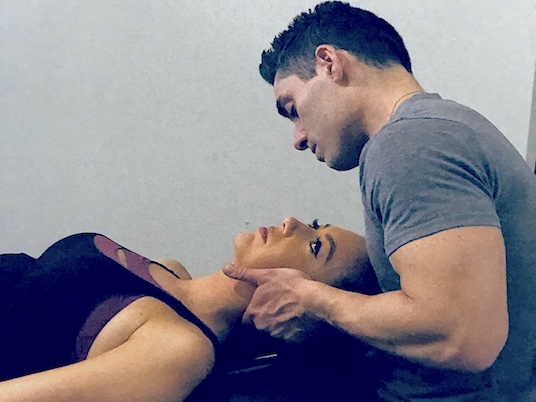MANUAL THERAPY
Articular Pumping
Articular pumping is a painless treatment aimed at mobilizing the joint fluids within an articulation or “joint.” Your body is composed of 70-80% water, more importantly it is composed of water tubes. Pumping stimulates the rhythm of the circulation of the water in these tubes.
Articulations are often subject to inflammatory rheumatisms (arthritis, poly–arthritis, capsulitis, etc), degenerative rheumatisms (vertebral arthrosis, coxarthrosis, etc.), and traumas (luxations, sprains, tendonitis). Proper functioning of an articulation calls for abundance of synovial fluid. Furthermore, this fluid must be mobile and contained in a supple membrane in order to avoid friction between tendons, ligaments, bursae, and capsule.
For these reasons, the intra–articular fluids must be mobilized with gentle manipulations: ARTICULAR PUMPING.

There are over 200 different pumping techniques, all targeting a specific ligament, tendon or a particular region of the capsule. Immediate effects following a session of articular pumping are: dramatic reduction of the inflammation, improved range of motion and joint function, and improved quality of healing, particularly in the cellular and regenerative phase following an injury.
The gains made following the manual therapy are then reinforced with a program of specific myofascial stretches and specific proprioception/ awareness exercises for the targeted area of treatment.
TTLS
TTLS (Transversal Tendonous Ligamentous Stretching) is a technique used on tendons and ligaments to sedate the nervous system in order to manipulate the joint. TTLS promotes the healing process using the body’s hormonal system. The stretches prompt your hormonal system to send macrophages and neutrophils to help heal the area.
TTLS is also used on tendons to try and separate them for optimal muscle function. For example, when you have a group of muscle fibers and tendons running in the same direction and crossing you create friction, you develop adherence of tendons and inflammation. The goal of TTLS is to create an environment where the tendons and muscles are free thereby allowing the muscle to function optimally.
Facial Normalization
Simply put, fascia is the structure that is responsible for linking different parts of the body, coordinating its function, and dictating the health of the systems. It is responsible for the links between bone and ligament, ligament and the muscle, the muscle and the visceral.
The goal of this technique is to normalize the fascia and allow the fluid within the collagen tubes to move freely, allowing reduction of inflammation, removal of waste and to create an environment where tissue is allowed to heal properly.
Immediate benefits of fascial normalization:
- Improved range of motion
- Elimination of inflammation following surgery and injury
- Freedom within a joint or muscle.
